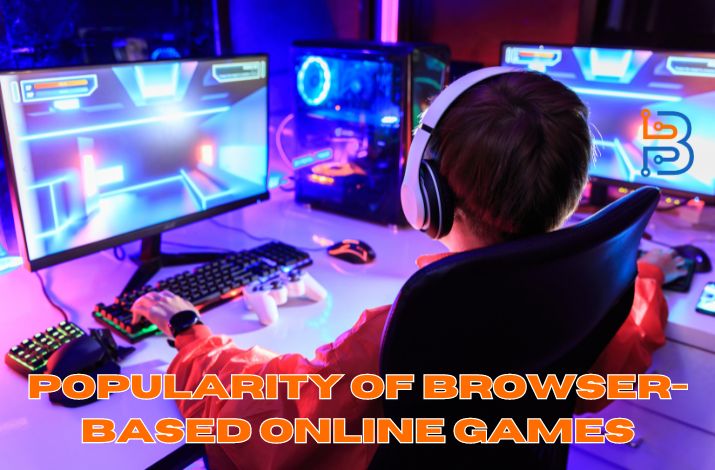Complete Guide to In-Game Advertising

In-game advertising can benefit your business if done right. Video games has always been popular among people and it can help you reach your required audience. However, this advertising method is expensive but it can pay you back if you know how to do it.
In this guide blog, we will provide valuable information that you get the most out of in-game advertising. We will cover the types of game advertising, best practices, their advantages and disadvantages, and metrics to measure success in-game advertising.
Let’s begin.
What is In-Game Advertising?
In-game advertising (IGA) represents a form of digital advertising embedded within video games, encompassing the display of images, videos, and audio advertisements. It allows marketers to strategically position tailored messages within games, fostering connections with highly engaged users. The range of ad formats available includes static and dynamic banners and video and audio advertisements. Illustrative instances of in-game ads encompass prominent billboards prominently featuring a company’s logo, aiming to establish a connection with the gaming audience.

Types of In-Game Advertising
Dynamic In-Game Advertising
Dynamic in-game advertising encompasses advertisements that can be modified or refreshed in real-time, adjusting to player actions, location, and time. These ads can target particular audiences and are versatile for promoting diverse services and products. This advertising proves more effective because it lets advertisers focus on precise demographics influenced by player location, behavior, and interests. For instance, a player immersed in a racing game might encounter an ad for a nearby car dealership.
Product Placement
Product placement entails seamlessly incorporating products or brand representations into the game’s storyline or environment. This advertising approach typically adopts a subtler approach to foster brand recognition through the game’s narrative. Product placement can be a more effective advertising method as it blends harmoniously within the game, avoiding the disruptive nature of traditional ads. This technique is especially impactful in games set within specific locations or historical periods, as it enhances the authenticity of the gaming experience for players.
Static In-Game Advertising
Static in-game advertising involves including ads that remain unchanged throughout the game’s duration. These ads are strategically placed to preserve the integrity of the gameplay experience. This advertising method is well-suited for brands aiming to establish a lasting impact on players. Furthermore, static in-game advertising can be a more economical choice, as it eliminates the need for frequent updates or alterations.
Advergaming
Advergaming is a form of in-game advertising where a game is crafted to showcase a service or product. These games are typically offered for free and can be accessed on mobile apps or websites. This is an efficient means of captivating players and endorsing a service or product through an enjoyable and interactive experience. It is especially potent for brands aiming to connect with younger audiences.
Best Practices for In-Game Advertising
User Segmentation
When incorporating in-game advertising, user segmentation is one of the pivotal factors to consider. This involves categorizing your user base into distinct groups according to their age, gender, interests, and behavior. Adopting this approach allows you to customize your advertisements for specific groups, enhancing the probability of a positive reception. For instance, if your game predominantly attracts young adults, your advertising efforts should center on products or services that resonate with that demographic.
Ad Placement
Another crucial aspect to think about is the positioning of advertisements. It’s vital to position ads in places that will maintain the gaming experience. A smart strategy often involves placing ads during loading screens or within pause menus. Equally important is avoiding ad placement in areas critical to the gameplay, like during intense boss battles or other pivotal moments in the game.

Ad Format
The format of your advertisements can also wield considerable influence over their effectiveness. Video ads, for instance, are more captivating than static ones but can come across as more intrusive. It’s crucial to strike a harmonious balance between engagement and intrusiveness. Furthermore, contemplate incentivizing players who opt to view ads, such as in-game currency or power-ups.
Integration with Gameplay
Last but not least, it’s vital to integrate ads into the overall gameplay experience seamlessly. This entails steering clear of ads that appear entirely detached from the game and integrating them in an organic and unobtrusive way. One approach could involve incorporating branded items within the game, such as clothing or weapons, to make the advertisement feel like a natural part of the gaming world.
Advantages of In-Game Advertising
Targeted Advertising
A primary benefit of in-game advertising is its capacity to aim at particular audiences precisely. In-game advertising enables targeted marketing according to the player’s behavior, demographics, and interests. This results in a more tailored experience for the player, often leading to increased engagement rates. Advertisers can harness data like gameplay behavior, player location, and game genre to deliver ads more likely to strike a chord with the player.
Increased Engagement
In-game advertising has the potential to boost player engagement by offering pertinent and captivating advertisements. When ads align with players’ interests and captivate their attention, they are more inclined to interact with and even share them, elevating brand recognition and fostering loyalty. In contrast to conventional advertising, which often goes unnoticed or gets skipped, in-game ads can smoothly blend into the gaming environment, contributing to a more immersive overall experience.
Higher Conversation Rate
In-game advertising has the potential to yield elevated conversion rates because players are more inclined to engage with ads that align with their interests. Within the realm of in-game advertising, players frequently exhibit greater receptiveness to seamlessly integrated ads that enhance their gameplay experience. Consequently, conversion rates for in-game advertising can surpass those of other advertising formats.
Disadvantages In-Game Advertising
Ad Blockers
Ad blockers have the potential to block in-game advertisements, resulting in reduced revenue for both marketers and game developers. While certain players may intentionally utilize ad blockers to evade ads, others may feel compelled to employ them due to sluggish loading times or a subpar user experience. Marketers and game developers must seek solutions to address the challenges posed by ad blockers and enhance the overall buyer experience for players.
User Experience Concerns
A primary issue associated with in-game advertising is the risk of ads causing interruptions in the gaming experience. When ads are positioned to hinder a player’s ability to relish the game fully, it can result in an unfavorable user experience. Furthermore, if the ads lack relevance or fail to captivate the player, it can similarly contribute to a negative overall experience.
Ad Fatigue
Game developers and marketers must strike a delicate equilibrium between monetization efforts and sustaining player engagement. An excessive barrage of ads can result in player fatigue, diminishing their focus and, consequently, potential revenue. When players perceive an overwhelming inundation of ads, it can erode their interest in the game, even to disengagement.
Metrics to Measure the Success of In-Game Advertising
Click-Through Rates (CTR)
The click-through rate (CTR) is a standard metric utilized to gauge the productiveness of online advertising campaigns. It’s calculated by dividing the integer of clicks on your ad by the integer of times it was displayed (impressions). A higher CTR signifies that your ad is more engaging and performs better. Nevertheless, it’s essential to recognize that CTR may not be the most suitable metric for assessing the victory of in-game advertising. Gamers typically concentrate on playing the game, and rattling on an ad may be a low priority. Instead, it is advisable to focus on engagement metrics that reveal how much time users devote to interacting with your ad.
Conversion Rate
The conversion rate is another vital metric for evaluating the effectiveness of in-game advertising. It signifies the proportion of users who clicked on your ad and completed the intended action, like purchasing or subscribing to a newsletter. Conversion rates provide valuable insights into how efficiently your ad influences user behavior. It’s essential to monitor conversions that align with your campaign objectives, like purchases, downloads, and sign-ups. To measure conversion rates, you’ll need to implement conversion tracking for your ad campaigns, which can be accomplished through various tools like Facebook Ads Manager or Google Analytics.
Return On Investment (ROI)
Return on investment (ROI) is a metric that reveals the revenue generated by your ad campaign relative to its overall cost. A positive ROI indicates that your campaign is yielding more income than it incurs in expenses, whereas a negative ROI signifies that your campaign is operating at a deficit. This metric holds paramount importance for evaluating the efficacy of any advertising initiative, including in-game advertising. To compute ROI, you must diligently track your advertising expenditure and the revenue generated from your campaign.
Final Thoughts
In-game advertising represents a dynamic and effective way for brands to connect with highly engaged gamers. Through seamless ad integration within the gaming environment, marketers can target precise audiences, elevate player engagement, and attain elevated conversion rates. Nonetheless, it is vital to incorporate best practices to prevent ads from interrupting the gaming experience or causing ad fatigue. The monitoring of engagement duration and assessing return on investment (ROI) metrics becomes imperative when evaluating the effectiveness of a campaign. With the right approach, in-game advertising offers a valuable opportunity for brands to reach and resonate with the coveted gaming demographic.






